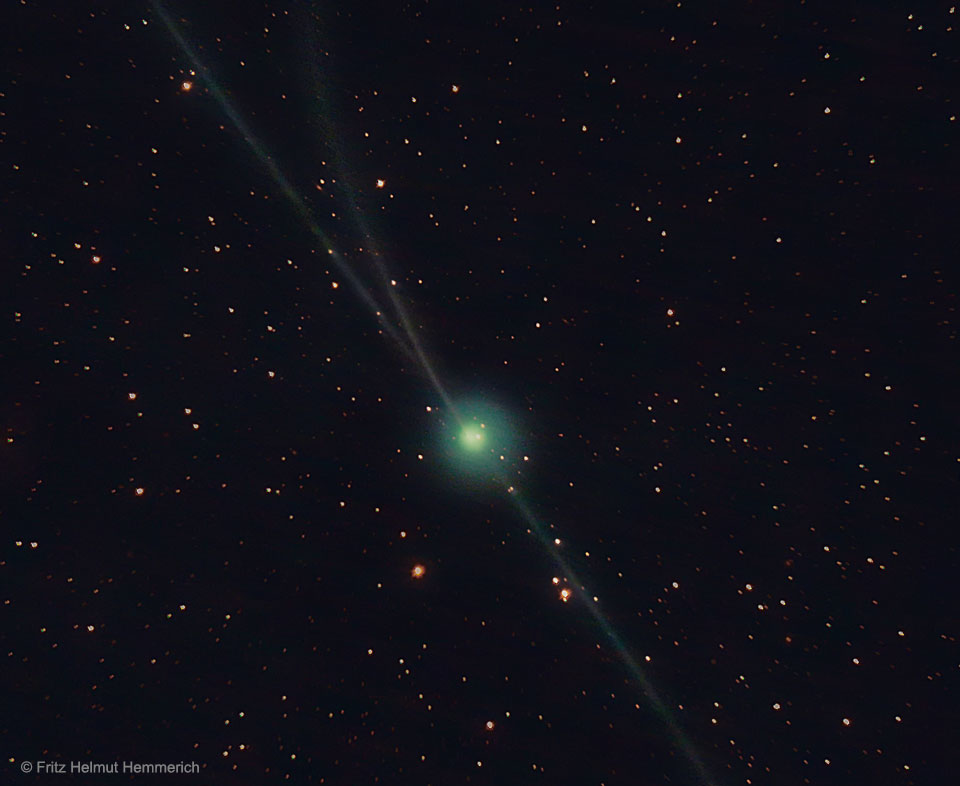more »
A small discrepancy in the value of a long-sought number has fostered a debate about just how well we know the cosmos.
via New York Times
There are advances being made almost daily in the disciplines required to make space and its contents accessible. This blog brings together a lot of that info, as it is reported, tracking the small steps into space that will make it just another place we carry out normal human economic, leisure and living activities.
Monday, 20 February 2017
Almost Three Tails for Comet Encke
more »

How can a comet have three tails? Normally, a comet has two tails: an ion tail of charged particles emitted by the comet and pushed out by the wind from the Sun, and a dust tail of small debris that orbits behind the comet but is also pushed out, to some degree, by the solar wind. Frequently a comet will appear to have only one tail because the other tail is not easily visible from the Earth. In the featured unusual image, Comet 2P/Encke appears to have three tails because the ion tail split just near to the time when the image was taken. The complex solar wind is occasionally turbulent and sometimes creates unusual structure in an ion tail. On rare occasions even ion-tail disconnection events have been recorded. An image of the Comet Encke taken two days later gives a perhaps less perplexing perspective.
Zazzle Space Gifts for young and old

How can a comet have three tails? Normally, a comet has two tails: an ion tail of charged particles emitted by the comet and pushed out by the wind from the Sun, and a dust tail of small debris that orbits behind the comet but is also pushed out, to some degree, by the solar wind. Frequently a comet will appear to have only one tail because the other tail is not easily visible from the Earth. In the featured unusual image, Comet 2P/Encke appears to have three tails because the ion tail split just near to the time when the image was taken. The complex solar wind is occasionally turbulent and sometimes creates unusual structure in an ion tail. On rare occasions even ion-tail disconnection events have been recorded. An image of the Comet Encke taken two days later gives a perhaps less perplexing perspective.
Zazzle Space Gifts for young and old
The thread of star birth
more »

Space Science Image of the Week: Herschel reveals stars growing along the filaments of a giant cloud of gas and dust
via ESA Space Science
http://www.esa.int/spaceinimages/Images/2017/02/Star_formation_on_filaments_in_RCW106
Space Science Image of the Week: Herschel reveals stars growing along the filaments of a giant cloud of gas and dust
via ESA Space Science
http://www.esa.int/spaceinimages/Images/2017/02/Star_formation_on_filaments_in_RCW106
Historic detection of gravitational waves
more »
A scientist who has been involved with nearly every aspect of the development and ultimate success of the Laser Interferometer Gravitational-wave Observatory (LIGO), will give a talk about the project's historic detection of gravitational waves.
via Science Daily
Zazzle Space Exploration market place
A scientist who has been involved with nearly every aspect of the development and ultimate success of the Laser Interferometer Gravitational-wave Observatory (LIGO), will give a talk about the project's historic detection of gravitational waves.
via Science Daily
Zazzle Space Exploration market place
Subscribe to:
Comments (Atom)